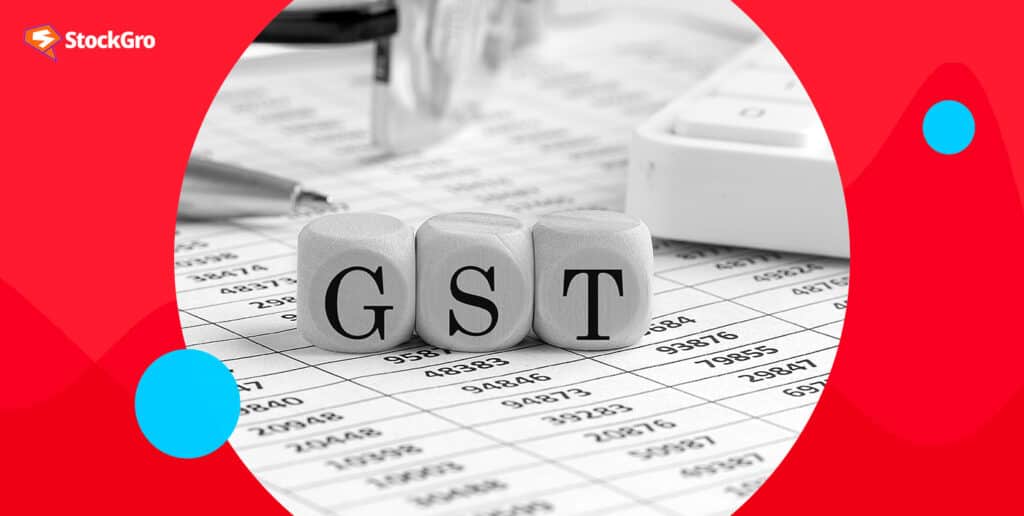
Introduction
The government implemented GST (Goods and Services Tax) in 2017 to simplify the complex indirect tax structure. This new tax replaced indirect taxes such as VAT, excise duty, and service tax.
In India, any business entity dealing in goods with an annual turnover over Rs 20,00,000 is needed to obtain GST. The threshold level for service businesses is Rs 40,00,000. However, the threshold limit is just half for states like Nagaland, Assam, and Manipur.
So, what are documents required GST registration? Here is the complete GST registration documents list to help you.
Documents Required for GST Registration
The GST registration document list differs from one business type to another. Here’s the breakdown of the same.
| Business Type | GST Registration Documents |
Individual or Sole Proprietorship | Owner’s PAN & Aadhar cardOwner’s photograph in JPEG format with a file size not exceeding 100 KBAddress proofBanking related documents |
Partnership firm/ LLP | Authorised signatory and managing partner’s PAN cardScanned copy of the partnership deed Partners’ photograph in JPEG format with a file size not exceeding 100 KBPartners’ address proofAppointment letter of authorised signatoryAadhar card of authorised signatoryScanned copy of board resolution or registration certificate (applicable for LLPs).Bank account detailsAddress proof proving the location of the business |
HUF | HUF’s PANKarta’s PAN and Aadhar cardOwner’s photograph in JPEG format with a file size not exceeding 100 KBBank account detailsAddress proof proving the location of the business |
Private/ Public Companies (Indian/ Foreign) | Company’s PAN cardIncorporation certificate issued by the MCA (Ministry of Corporate Affairs)Article of AssociationMemorandum of Association Aadhar card and PAN card of authorised signatory (authorised signatory must be Indian regardless of whether the company is Indian or foreign)Company directors’ PAN and Aadhar Card Authorised signatory and directors’ photographs in JPEG format with a file size not exceeding 100 KBBank account details Address proof proving the location of the business |
Now that you have the documents required for GST registration for proprietorship and other entities, you must understand the detailed information on the acceptable papers under banking and business address proof.
Bank Account Details:
- Cancelled cheque copy
- Copy of the first and last page of the recently updated passbook used for business purposes.
Note: The maximum acceptable document size while uploading is 100 kb.
Address Proof
- Municipal khata
- Property tax receipt
- Recent electricity bill
- Property ownership copy (if owned by the business owner)
- Rent or lease agreement (for leased property)
- Consent letter for shared property
Also Read: Understanding GST: The tax superhero of India
Additional Documents for GST Registration
Depending on the type of GST registration, a few more documents are required. These are:
GST Practitioner
- Scanned copy of qualifying degree
- Pension certificate for retired government employees
TDS Registration
- Drawing & disbursing official photograph
- TAN details
- Tax deductor’s address proof
TCS Registration:
- Tax collector’s address proof
OIDAR Service Provider (Non-Resident):
- Service provider proof, such as a clearance certificate from the Indian government and a license from the original nation
Non-resident Taxable Person:
- NRTP passport with visa details
Step to complete GST registration in India
Go through the following steps to complete the registration process.
Step 1:
- Visit the GST portal by clicking here.
- Tap ‘Registration’ and click ‘New Registration’ next.
Step 2:
- Fill out Part A of the form.
- Under New Registration’s drop-down menu, choose ‘Taxpayer’ under the ‘I am a’ option.
- Choose your state and district. It should be the same as that of your business registration papers.
- Provide your business name and its PAN details.
- In case you have yet to link your contact and mailing details with PAN, share them in the form.
- Enter the OTP and tap on ‘Proceed.’
Step 3:
- You will receive two OTPs. One is on a mobile number, and the other is on a mail ID. Enter both and click on ‘Continue.’
- Check for a 15-digit TRN or Temporary Reference Number and save it as you need it to complete Part B within 15 days of receiving this number.
Step 4:
- Go to the GST portal again and tap ‘New Registration.’
- Choose Temporary Reference Number (TRN) to input TRN, and then input the captcha and tap on ‘Proceed.’
- Next, enter the OTP.
- On the new screen, tap on the edit icon under the ‘Action’ column.
Step 5:
- You will see Part B on the screen. This form has ten sections and is related to the business information.
- Provide your trade name and details on the business constitution.
- Next, choose ‘Yes/No’ under the ‘Option for Composition’ field. Also, select the registered person type. This can be a service provider, manufacturer, or other eligible person.
- Next, enter the establishment date and choose from ‘Yes/No’ to inform if you are a casual taxable person. Generate challan for advance tax payment if you have chosen a casual taxable person.
- Tap on ‘Reason to Obtain’, and from the drop-down menu, choose the relevant option.
Step 6:
- Move to the ‘Promoters/Partners’ tab and fill out the blank fields.
- Upload partners’ photographs and make sure the JPEG or PDF file size is up to 1 MB.
Step 7:
- Fill out the details under the ‘Authorised Signatory’ section.
Step 8:
- Complete details under the ‘Enter Principal Place of Business details.’
Step 9:
- Under ‘Additional Places of Business,’ share the number of locations your business has existence.
Step 10:
- Complete the required details under the ‘Goods and Services’ tab.
- Choose SAC or HSN for up to five goods and five services.
Step 11:
- Provide your banking details. You can add up to ten bank accounts.
Step 12:
- Provide professional tax (PT) registration certificate, PT employee code, and state excise license details under the ‘State Specific Information Tab.’
Step 13:
- Under ‘Aadhaar Authentication,’ choose if you wish to proceed with this authentication.
Step 14:
- Tap the ‘Verification’ tab, tick the declaration checkbox, and submit your application.
Also Read: What is a GST Demand Notice, and why is everyone getting them?
Conclusion
Learning about the GST document list is required for seamless registration. If you do not provide the necessary documentation, your application will be rejected, or you will experience problems in the future. To learn more about financial concepts and jargon, subscribe to StockGro.

